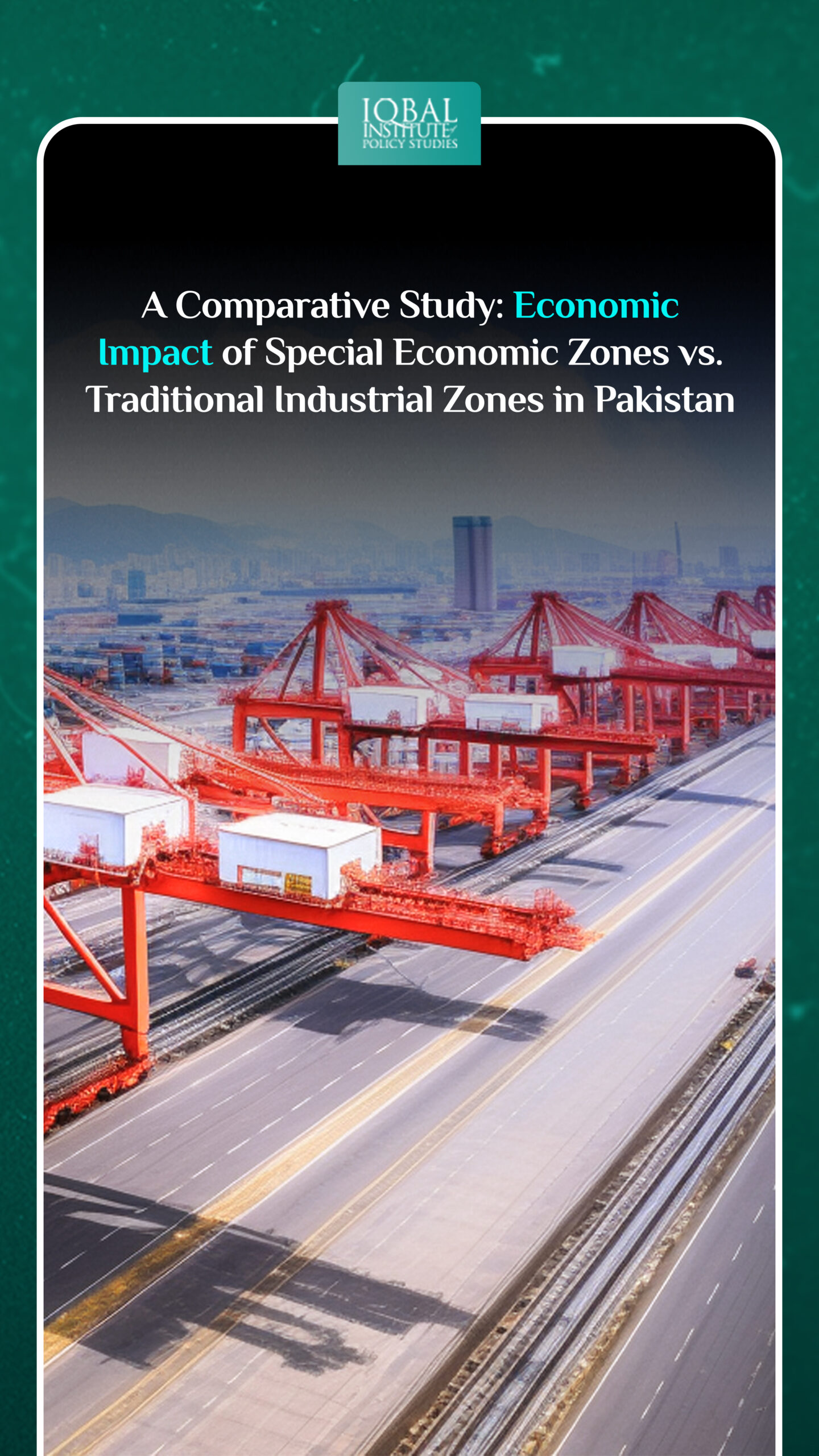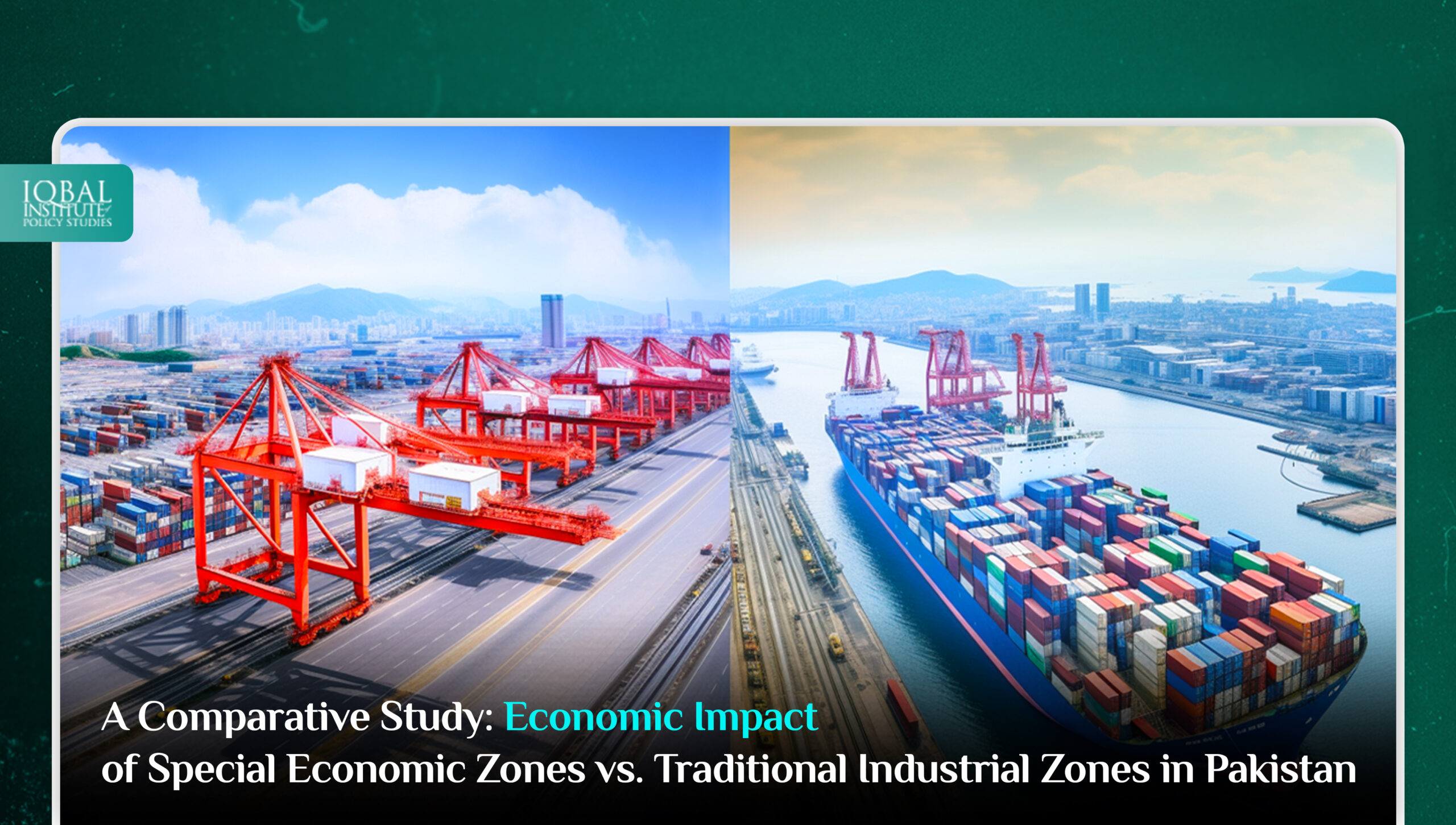Pakistan’s quest for economic development has seen the proliferation of industrial zones across the country, each designed to attract investments, create employment opportunities, and spur industrial growth. Special Economic Zones (SEZs) and traditional industrial zones hold significant importance among these. Understanding the distinct economic impact of these zones is crucial in devising effective policies to accelerate Pakistan’s economic progress. This extended blog delves into the nuances of SEZs and traditional industrial zones, exploring their strengths, weaknesses, and overall contributions to Pakistan’s economic landscape.
Special Economic Zones (SEZs): A Catalyst for Export-Oriented Growth
Special Economic Zones are purposefully demarcated areas that offer a conducive environment for business and investment. They serve as catalysts for export-oriented growth, pivotal in accelerating a country’s economic development through increased exports. These demarcated areas are strategically designed to attract domestic and foreign investors, offering various incentives and a business-friendly environment. SEZs are equipped with state-of-the-art infrastructure, streamlined administrative processes, and investor-centric policies, making them highly attractive destinations for export-focused industries. By providing fiscal incentives such as tax exemptions, customs duty waivers, and repatriation of profits, SEZs encourage businesses to set up manufacturing units within their boundaries, ultimately bolstering export-oriented industries. The concentrated focus on exports enables SEZs to significantly reduce trade deficits, enhance trade balance, and improve foreign exchange earnings for the country. Moreover, SEZs are pivotal in attracting Foreign Direct Investment (FDI), bringing in capital investment, and facilitating technology transfer and knowledge sharing. By acting as centers of innovation and global competitiveness, SEZs strengthen the export-oriented industrial base, making them instrumental in enhancing a nation’s resilience in the worldwide market and accelerating its economic growth trajectory.
Fiscal and Regulatory Incentives
SEZs offer comprehensive fiscal and regulatory incentives, making them highly attractive to foreign investors and export-focused industries. These incentives may include tax exemptions, customs duty waivers on imported machinery and raw materials, repatriation of profits, and simplified customs procedures.
FDI Attraction
SEZs play a pivotal role in attracting Foreign Direct Investment (FDI) to Pakistan. Foreign companies find the combination of incentives, infrastructure, and proximity to markets appealing for establishing their manufacturing units within these zones. The influx of FDI brings in capital and contributes to technology transfer, skill development, and knowledge sharing with local industries.
Export Performance
A primary goal of SEZs is to boost export performance. These zones are equipped to promote export-oriented industries, increasing the country’s foreign exchange earnings. SEZs are instrumental in reducing the trade deficit, enhancing the balance of trade, and bolstering the resilience of Pakistan’s economy in the global market.
Traditional Industrial Zones: Nurturing Local Industries and Domestic Manufacturing
Though less heavily incentivized than SEZs, traditional industrial zones significantly support domestic industries and foster regional development. They play a vital role in nurturing local industries and fostering domestic manufacturing in a country. Unlike Special Economic Zones (SEZs), traditional industrial zones may not offer the same level of comprehensive incentives and infrastructure facilities; however, they serve as essential catalysts for promoting local businesses and supporting regional development. These zones are strategically distributed across various country regions, encouraging a decentralized approach to industrialization. By providing a favorable environment for domestic industries, traditional industrial zones create employment opportunities and contribute to skill development for the local workforce. The focus on nurturing local initiatives and supporting domestic manufacturing allows these zones to stimulate economic growth at the grassroots level, driving the country’s industrial capabilities forward.
Furthermore, traditional industrial zones contribute to regional development by spreading economic activities to areas beyond major urban centers. This balanced approach ensures inclusive growth, reduces regional disparities, and enhances the standard of living for communities surrounding these zones. As hubs of local industry and manufacturing, traditional industrial zones are pivotal in building a solid and self-reliant economic foundation for the nation.
Fiscal and Regulatory Incentives
While traditional industrial zones may offer some fiscal incentives, they might need to match the comprehensive offerings of SEZs. Nonetheless, they often provide support through reduced utility rates and other localized incentives, encouraging local businesses to flourish.
Employment Generation
Both SEZs and traditional industrial zones contribute to job creation and skill development. Traditional industrial zones, distributed across various regions, provide employment opportunities closer to local communities, positively impacting living standards.
Regional Development
Traditional industrial zones have a unique role in promoting regional development. By decentralizing economic activities, these zones contribute to the balanced growth of various regions, reducing the concentration of economic activities in urban centers.
A Balanced Approach: Leveraging the Strengths of Both Zones
A successful economic development strategy should consider a balanced approach, leveraging the strengths of both SEZs and traditional industrial zones. While SEZs attract foreign investment and promote export-oriented industries, standard industrial zones support domestic manufacturing and regional development.
Targeted Investments
Policymakers can strategically allocate resources to both types of zones, ensuring targeted investments to capitalize on their respective advantages. SEZs can be further expanded to attract high-tech industries and promote innovation, while traditional industrial zones can be nurtured to support labor-intensive sectors.
Infrastructure Development
A critical aspect for both zones is the development of state-of-the-art infrastructure. Investment in transportation, energy, and communication networks will attract businesses and promote overall economic growth.
Skill Development
Emphasizing skill development and vocational training programs in both zones will strengthen human capital and foster innovation and productivity.
Conclusion:
In conclusion, the economic impact of Special Economic Zones and traditional industrial zones in Pakistan is multifaceted. SEZs act as catalysts for export-oriented growth, attracting foreign investment and boosting exports. On the other hand, traditional industrial zones nurture local industries, generate employment, and promote regional development. By adopting a balanced approach, Pakistan can harness the strengths of both zones to achieve sustainable economic growth, enhance industrial competitiveness, and create an inclusive economy. Policymakers must continually evaluate and refine policies to capitalize on the potential of these zones, ensuring that they remain pivotal drivers of Pakistan’s economic development journey.
This article is written by Radma Nouman. Radma is a research analyst at The Iqbal Institute of Policy Studies (IIPS).



Leave a Reply